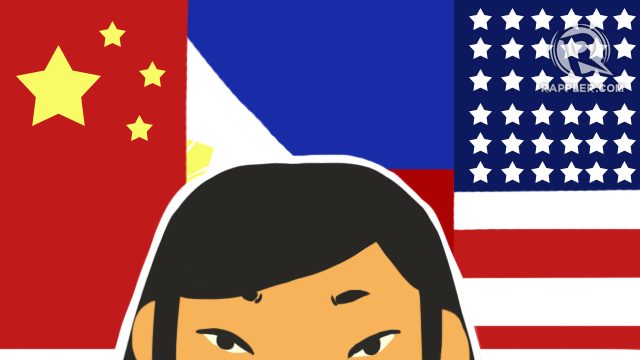SUMMARY
This is AI generated summarization, which may have errors. For context, always refer to the full article.

During icebreaker sessions, I always freeze up when the inevitable “Where are you from?” question gets tossed my way.
That hesitation stems from the fact that I don’t think I can give a simple response. Do I answer with the geographic location I’m currently living in, the one I grew up in, or the one I’m ethnically from? The fact that these 3 questions have different answers makes things complicated, especially when I’m prodded for more details or met with the awkward silence of someone who doesn’t quite know how to proceed with that information.
My identity “elevator pitch” is a little something like this: “I’m pure Chinese, but I grew up in the Philippines. I went to an International School for high school before moving to America for my undergraduate and graduate studies. I now live in New York City.” It sounds simple enough, but at the time I crafted that statement, I had been living in Singapore, was interning at an Austrian company, and was sick of consistently being asked, “Why is your English so good?”
Jack of all trades
There are moments when I love my “third culture kid” status. I feel privileged to be able to participate in and enjoy the fruits of my different heritages. However, I oftentimes feel like the cultural equivalent of the “Jack of all trades, master of none” because I dabble in a couple of traditions, but I’m not fully immersed in any particular one.
My ama (paternal grandmother and the grandparent I was closest to) did her best to pass down Chinese practices to us, her descendants, but when she passed away, many of the practices did not end up being enforced as strictly. As a family, we may not have fully absorbed some Chinese customs, having done certain ones mostly out of routine without internalizing the actual reason behind certain rituals.

We’ve also assimilated some of the Filipino customs both from growing up in the country and from adopting new traditions from Filipino in-laws. By the time I grew up, only a handful of cousins had gone through the Ting Hun (Chinese Engagement Ceremony), and even fewer had done Ge Lai (a Chinese practice for recovery after childbirth). The clan still regularly visits the family mausoleum in the Chinese cemetery on certain anniversaries to light incense (a Chinese practice) but to also pray the novena for their souls (a Filipino-Catholic practice).
Struggle
For a while, the altar at home housed a confusing mixture of Catholic figurines like the Sto Nino, a crucifix, and Mother Mary and Chinese ones like Buddha and the Three Wise Men (Fuk, Luk, and Sao).
Even in the midst of my own extended family, certain members are addressed by their Chinese hierarchical designation (a-pe for my dad’s oldest brother or twa-ko for my dad’s oldest sister), but others are addressed with Filipino terminology (my dad’s youngest sister should normally be called sa-ko for third sister, but we refer to her as tita instead, which is the Filipino word for aunt).
As I’ve grown up and moved away from my Philippine home, I find myself clinging fiercely to these rituals in all their perplexing, hybrid glory. My New York-based cousin and I make it a point to drag our husbands out to celebrate Chinese New Year, the Mooncake Festival, and Philippine Independence Day with us. We buy familiar comfort food and end up sitting for hours rehashing old stories of times we spent with our family. The food never tastes the same as it did back home, but it takes on a whole new flavor and a brand new meaning in the midst of all the nostalgia.
Cultural breadcrumbs
During Chinese New Year, I feel incredibly fortunate to have found myself back in the Philippines, able to ring in a new lunar calendar year with my loved ones here at home. As cheesy as they are, I am looking forward to the little things: wearing red, watching the dragon and lion dances, feasting on the Chinese lauriat dinners, eating tikoy (rice cake), and looking up Chinese Zodiac Feng Shui readings with my family members.
As a balikbayan (Philippine national currently residing abroad), I have a renewed and ever-evolving appreciation for the cultural practices that my Chinese grandparents left behind, however silly or superstitious some of them may seem. They are like little cultural breadcrumbs that always anchor me back to home, no matter how far away I am.
It is in the midst of this sentimentality that I realize that it isn’t just about staying true to the rituals but staying true to the spirit of what they represent. Above everything, my ama valued family and togetherness. Our family closeness has been pulled even closer through the shared experiences of going through these activities together.
Every occasion brings opportunities for new memories. With many of my family members now dispersed into the world, it’s wonderful to be able to look back and carry these everlasting footprints of my grandparents’ heritage and legacy in my heart. – Rappler.com
Tiffany Qua is a New York-based digital marketer who specializes in content and brand strategy. She received her Master of Arts in Communication at Johns Hopkins University and her Bachelor of Arts in Economics at Barnard College, Columbia University.
Add a comment
How does this make you feel?





There are no comments yet. Add your comment to start the conversation.